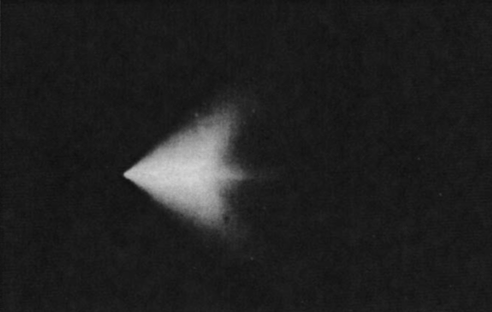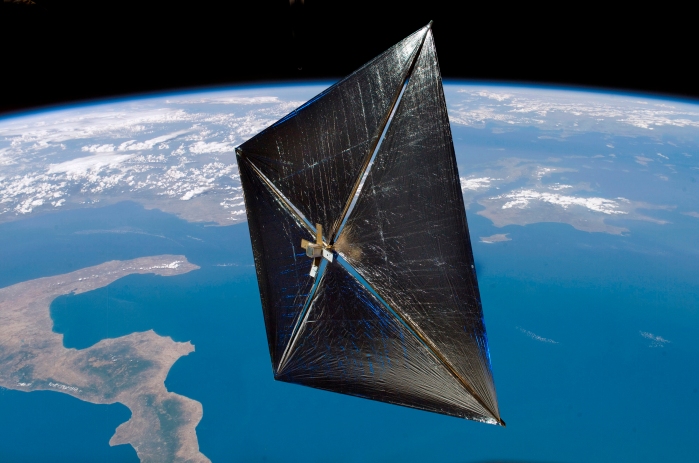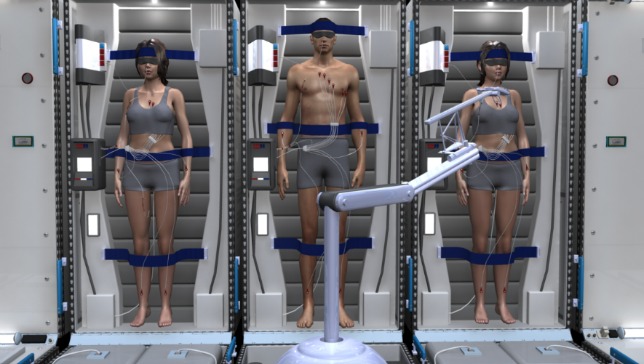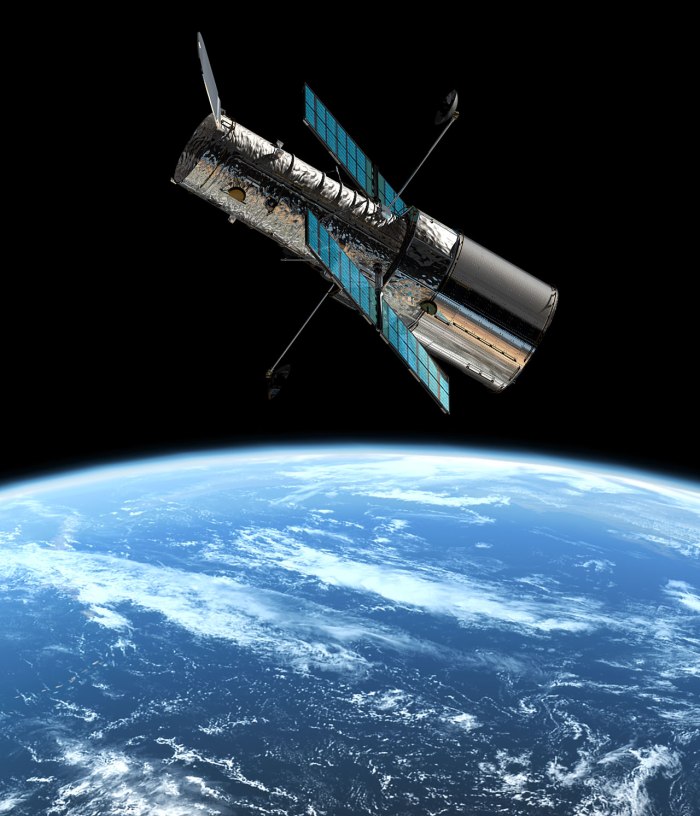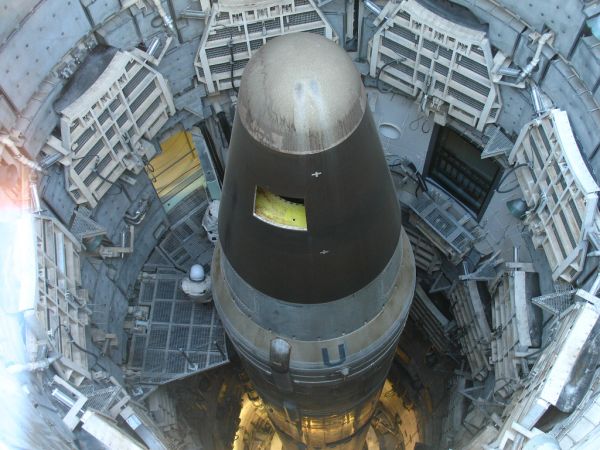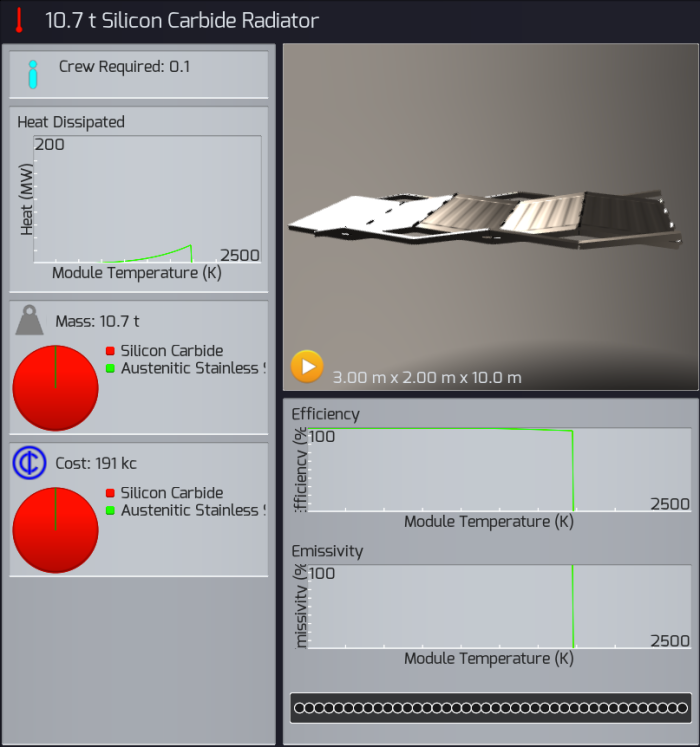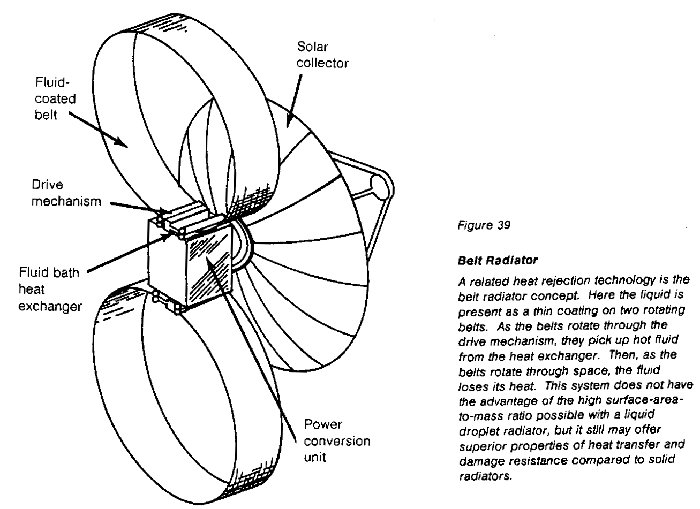One of the most complex parts of a spacecraft is the power supply, which usually takes the form of a nuclear reactor.

Nuclear fission is about 600,000 times more energy dense than the most energetic chemical power reactions, which very easily makes it the best power supply for space. In space, mass is a premium, so energy density is critical. Most capital ships use fission reactors to get their power.

Similarly, Radioactive Decay runs about 15,000 times more energy dense than chemical reactions, which is why Radioisotope Thermoelectric Generators (RTGs) are the next best thing. Most drones and missiles with significant power needs use RTGs. Anything with lesser power needs simply use small batteries.
Chemical energy requires tremendous amounts of mass produce reasonable amounts of power, after which this mass is ejected. This makes it not very viable for space except as rocket propellant.

Solar power becomes more or less useless further away from the sun (at Jupiter, the irradiance is 30 times lower than that on Earth). They are also much harder to armor than radiators, making them a poor investment for space warships.
Beamed power suffers from the beam waist widening very quickly over distance, which limits its effectiveness to very low orbits around celestial bodies. This occurs even with a constellation of mirrors to extend the range. Beamed power similarly require receivers that can be damaged easily, and if they are to be used in close combat, they can’t be covered up, making beamed power fairly infeasible for warfare.
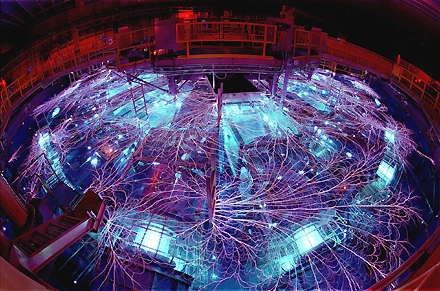
Fusion Power is a power source that could make all other sources obsolete if it can be developed. In its current state, it is too far future of a technology. An additional consideration about Fusion Power is that it, along with Fission Power, are not limited by energy density, unlike the other aforementioned power sources. While the other power sources are limited by not producing enough power, Fission and Fusion Power both generate more power than modern systems could ever dream of using. Fission Power is not limited by how much nuclear fuel you have, it is limited primarily by how large your radiators are. This means any limitations on Fission Power currently will still remain even if Fusion Power replaces it.
All of this means that the main power supply in Children of a Dead Earth is nuclear fission.

In Children of a Dead Earth, nuclear reactor cores are governed by the Six Factor Formula. This rather large and complex equation which determines the effective neutron multiplication factor. Given the masses of all the materials inside the core from the fuel to the moderator to the neutron poison to the coolant, the operational characteristics of the reactor can be determined. This means the rate at which a core achieves criticality or shuts down can be predicted, and it usually takes microseconds.
Given a working reactor core, the neutron flux of a reactor can be arbitrarily controlled. The neutron flux directly determines the amount of heat the reactor will produce, which means the reactor can arbitrarily control the heat produced, and by extension, the power produced.
These fission reactors are not limited by the Uranium-235 fuel (or Pu-238 or Am-242m, etc.) inside the core. In practice, the amount of nuclear fuel is minuscule compared to the rest of the reactor elements. This is why 3% enrichment of U-235 is actually quite reasonable for reactor fuel. Contrast this with nuclear weapons, where around 97% enrichment of U-235 is preferred.
The main power limit inside the core is how hot you can make it. And generally how much heat your reactor can withstand is dependent on how large you can make the reactor to reduce energy per unit area. Additionally, the design of your fuel makes somewhat of a difference, as fuels such as TRISO allow for a Pebble Bed Reactor design, which yields somewhat higher heat tolerances.

The reason temperature is the limiting factor of a nuclear reactor, rather than the actual fuel mass, is that the energy density is so high that a nuclear reactor will never come close to unlocking all of the power of even a small amount of fuel mass. Nuclear reactor design mostly boils down to how much energy can be extracted from a tiny amount of nuclear fuel without melting to slag.
Thus, how much nuclear fuel is needed has nothing to do with how much power you need, and everything to do with whether or not your reactor can achieve a critical mass.

For this reason, using more or less energy dense nuclear fuels is basically pointless, as they all produce “too much”. The main difference between fuels is how they affect the neutron multiplication factor. Certain fuels, like Am-242m, can achieve a critical mass more easily, and thus, less nuclear fuel is needed. This means the reactor design might be made smaller for the same amount of power.
In practice, however, the mass of the radiators ultimately end up being the limiting factor on nuclear reactors.
Of course, simply creating an atomic pile and letting it spew neutrons and radioactive waste is not enough to produce power. Power needs to be extracted from the heat of these fast moving nuclear byproducts. A number of methods have been devised to do so.

Turboelectric Fission Reactors involves letting the neutrons heat up the coolant and using the hot vaporized coolant to turn a turbine. This technique is the most common, being used in just about every nuclear reactor in the world. It requires a large turbine to effectively extract the heat, as well as plenty of coolant and turbomachinery to run it properly. Due to the size, it can take a while to warm up. Due to the mass and complexity, it generally is not used for spacecrafts.
Turboelectric Fission Reactors are heat engines, meaning they can never exceed the efficiency of a Carnot Cycle:
Where is the efficiency,
is the cold temperature of the coolant prior to passing through the reactor, and
is the hot temperature of the coolant after passing through the reactor.
As noted in Why does it look like that? (Part 3), the cold temperature needs to stay high because this is the temperature the radiators will cool the reactor at. Cold radiators function abysmally and require huge amounts of mass. Similarly, the hot temperature needs to stay low to prevent the systems from cracking from the thermal stress.

The sample reactor has a radiator temperature of 1200 K and 1688 K as the hot temperature. Using the above equation, this means the efficiency of that reactor can never exceed 29%, if it were theoretically perfect. In practice, the actual reactor runs at 22% efficiency.
On Earth, turboelectric reactors often quoted at running at 60% efficiency. This is possible because the cold temperature can be brought much lower if you are using conduction or convection to cool off the reactor. In space, using only radiators forces the cold temperature to be rather hot (> 1000 K usually) in order to keep the radiators from getting too large.

Thermoelectric Fission Reactors are heat engines as well. However, instead of passing the hot coolant through a turbine, it instead passes against as a thermocouple heat exchanger. It involves much less turbomachinery, and thus can be produced in much smaller sizes with much lower masses. On the flip side, it is often much further from the theoretical Carnot Cycle efficiency than turboelectric reactors. In space, it is the primary go-to reactor design due to its low mass, simple design, and cheap cost.

Thermionic Fission Reactors uses the concept that the flow of charge carriers (such as electrons) across a potential barrier can produce power. This flow of electrons is triggered thermally, and thus is set up very similarly to the way Thermoelectric Fission Reactors work. It is also a heat engine, and sees similar use in space as the thermoelectric fission reactor.
Fission Fragment Reactors do not use coolant at all, and instead extract power by decelerating the neutrons and radioactive waste products using a magnetohydrodynamic generator. This bypasses the Carnot Cycle entirely, allowing efficiencies estimated up to 90%, far greater than any of the previously mentioned heat engines. However, it is also the least developed of all the technologies, and to date, no working Fission Fragment Reactor has been produced.

Since Children of a Dead Earth restricts itself to functioning technologies, this means nuclear reactors are restricted to Heat Engine designs. And due to the Carnot Cycle, the efficiency is forever limited by the cold temperature, or the radiator temperature.
Due to this restriction, the most massive part of a nuclear reactor is the radiators that accompany them. The power extraction machinery tends to be the next most massive piece, with the reactor core itself generally being negligible in terms of mass. On the flip side, the tiny amount of reactor fuel tends to be one of the most expensive parts of the entire system.
